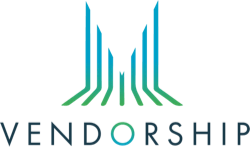
Share This
The Pandemic and Digital Optimization — What Does it Mean for Municipal HR? (American City & County)
As public and private partnerships become more common in this digitially-driven pandemic era, Team Vendorship. Inc. is following trade news and human resources trends to deliver one of our best-topic third-Wednesday Checking In webinar events yet February 17th at 3 p.m. EST.
Request to have our invite delivered directly to your inbox by messaging ours at [email protected]
Meanwhile, human resource managers have long prided themselves on having a physical presence in their offices. HR managers should, after all, be visible and accessible. They should have a physical open door so that staff can seek them out for counsel at any time. However, COVID-19 has wholly disrupted this model for both private and public sector HR leaders.
Read more about this emerging dilemma below for those in the public sector either considering top IT talent direct hires, or staff. augmentation outsourcing.
More here from American City & County:

For local governments that have operated for centuries on-site with open doors, and that have not previously had to build a long-term sustainable model to enable remote work, the COVID-19 pandemic and its shelter-in-place requirement have sent employees home and created distance and uncertainty for HR leaders.
While governments are adapting — putting tools and technology in place to archetype a work-from-home model to enable short-term success — trend watchers are asking the overarching question: How will COVID-19’s diversified workforce experience redefine employee expectations of the public sector?
When the pandemic subsides, will everyone revert to their in-office, in-person, manual workflows, or will the forced work-from-home, digital-first experience prove to offer value to employees that HR leaders have to address? Further, will there be negative repercussions to a nation having survived a pandemic that employers will need to navigate?
We predict that HR leaders should expect what is being called, in the short-term, the new normal of government service delivery, to become a much more permanent work modality alteration.
The Remote Work Shift
Non-unionized private sector employers with multiple offices around the nation or the world face a different logistical reality relative to the possibility of changing work-from-home policies after the COVID-19 crisis. While the public sector will be expected to reopen its doors and employees will be expected to return to their desks, it can’t be ignored that COVID-19 has proven that administrative staff in many departments and roles can be productive when working remotely. This surprising fact is true, particularly when employees are given the necessary cloud-based technology, and if they make an effort to create a functional home office.
In response to those employees that have found that without the distractions of the watercooler, the team birthday lunch and the unexpected office visitor pop-in, that their daily productivity has boomed, can department leaders, in good faith, deny requests to consider possible part-time or ad-hoc work-from-home requests? For those cases where an employee needs to stay home with a sick child and would typically have to take sick leave or paid-time-off (PTO) if the employee can effectively work from home without sacrificing PTO, should such arrangements be considered? HR leaders should expect such discussions to arise during future union negotiation agreements.
Morale and Engagement Challenges
Any discussion around how municipalities are responding to the COVID-19 crisis is incomplete without a consideration of staffing changes. While municipal doors are closed, and departments such as parks and recreation are losing revenue due to canceled programming, municipalities have been forced to consider hour reductions and furloughs for impacted, non-essential staff positions. Furloughs and their mandatory but temporary unpaid leave put employees in a challenging financial situation and may force some to consider alternative employment if they can find such opportunities.
For those able to wait out their period of unemployment, it is reasonable to expect that their morale may be damaged when they eventually return to work. Having been deemed non-essential and furloughed during the pandemic, the expectation that employees will complacently return to work and pick back up key projects may not be realistic. Their morale, confidence, and engagement may be damaged, which will put more significant pressure on HR leaders to find genuine opportunities to reengage these individuals and keep them from becoming a source of negative energy within their department.
Digital Employee Management
HR managers still operating under paper-based workflows during COVID-19 have likely been hamstrung in any efforts to promote, hire, onboard, and evaluate employee performance, if such functions have been able to continue amidst the chaos. Without the ability to hand an employee a paper onboarding packet or accept a paper job application from an interested candidate, or ask a manager to sign an original copy of their employee’s performance review, critical talent management workflows are stymied. The HR departments able to keep calm and carry on, are those that have been able to continue such critical operations using cloud-based software.
Public sector HR managers who have not already taken strides to implement digital optimization efforts to online-convert analog workflows will need to ask themselves if their operations are prepared for another work environment disruption. For those that answer “no,” post-COVID-19 priorities must include digital optimization considerations.
Stressing Worker Wellness
We have quickly become a society that strictly counts the exact number of seconds with which we wash our hands. We are also becoming a society that acutely feels the strain of unavailable team members who are temporarily lost to us while recovering from a complex illness or attempting to homeschool their children. The point is that COVID-19 has uncovered a national need to better care for our health and wellbeing while forcing us to scrutinize our work-home life balance and priority setting.
Some of the largest employers in the nation, like Wal-Mart and Starbucks, are assessing their health care and employee assistance program benefits and enhancing them to ensure employees have access to appropriate levels of sick leave, access to telemedicine services, and that they know how to obtain mental health counseling support. The public sector, whose employees have been critical to providing local community news, resources, aid, and community support, deserve to prioritize their health and wellbeing with the same amount of employer support as those in the private sector, and it will be HR leaders’ responsibility to initiate those opportunity advancements.
Prioritize Cross-Training Programs
In the initial days of local governments’ shift to decentralized work, vital municipal operations stalled as department leaders grappled with such challenges as critical staff members not having adequate technology or access to systems, employees needing to take time off to care for themselves or sick family members, and making arrangement to homeschool their children.
What HR managers should learn from these disruptions, is that more cross-training could have alleviated some of the burdens caused by single-point-of-failure operations. If more employees could conduct critical functions, process forms, and requests, work within vital software systems, or answer citizen questions on specific topics, the initial stress fractures caused by remote work disruptions may have been mitigated. Lessons learned from COVID-19, and the corresponding critical initiatives for HR leaders should include a higher priority on employee cross-training efforts in all departments to mitigate the chance of future disruptions.
COVID-19 as a Gov Service Delivery Optimization Accelerator
The loss of life that COVID-19 is causing is unthinkable. Leaders across the nation owe it to all those whose lives have been lost to take what they have learned during this pandemic and use it to strengthen our society and safeguard us from future catastrophic health, business, and economic impact. A year from now, municipal HR leaders will no doubt realize that a byproduct of the devastating COVID-19 pandemic is an acceleration toward workplace efficiency models, more significant employee support, and optimized citizen service delivery, three valuable trends that will help leaders move our communities forward—together.
